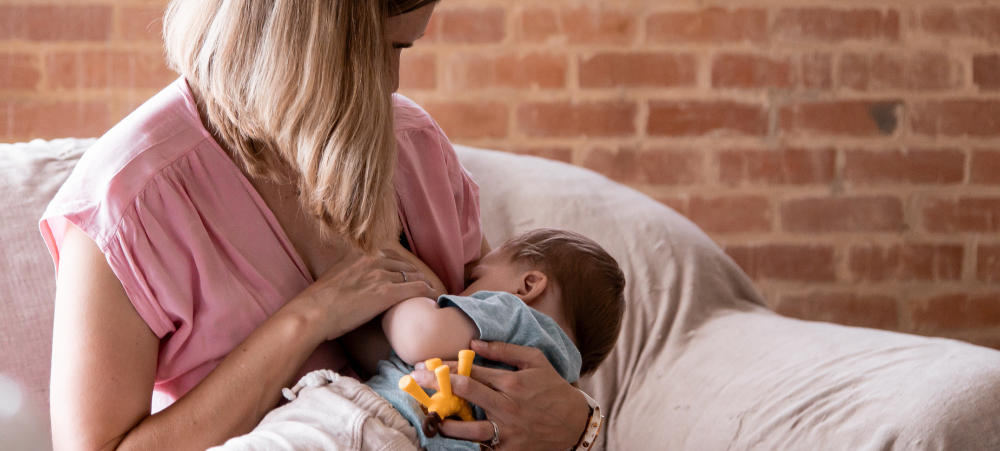Ameda breast pumps have been designed for your comfort and safety and are the only FDA approved closed system breast pumps available in South Africa. Ameda developed the first truly closed system breast pump which prevents bacterial and viral contamination of your breast milk. Ameda is committed to the safety of mothers and their infants and has made expressing breast milk safer a priority, this commitment goes back a many years resulting in Ameda leading way of the breast pump industry with closed system breast pumps. Ameda is dedicated to making sure babies are safe and mothers are confident that their breast pump is a proper closed system. For mothers of NICU this is incredibly important because premature infants need to be protected from any possible infections.
Did you know that the difference between an open and closed system breast pump is, and why it is so important when considering buying a new breast pump? Before you decide on the brand of breast pump find out if the brand has open system, a back-flow protector or is a closed system. True closed system breast pumps are the gold standard of breast pumps because it prevents not only the back flow of milk but is also clinically proven to prevent the movement of bacteria and viruses. Closed system breast pumps are designed in such a way that your breast milk, bacteria, and viruses are prevented from moving into the tubing and getting in the motor and casing of the pump. Once the milk is in the tubing or pump case it is exceedingly difficult to clean, if not impossible, and allows for the growth of the bacteria and viruses. This is all made possible without compromising the suction ability of the pump.
Ameda developed the HygieniKit (the parts of the breast pump that collects the milk and attached to the motor of the pump, including the tubing) which can be used with all its pumps both private and Hospital Grade rentals. The HygieniKit has been tested and approved by the FDA as a true closed system pump. How it works is simple but very clever. The HygieniKit has a silicone diaphragm at the top of the flange (part that touches your breast) just before the tubing starts. This means that your milk stays in the flange and does not enter the tubing at all. The FDA tested the diaphragm to confirm if it is an effective barrier for milk, bacteria and viruses’ milk and does not allow any movement between the milk collection and the pump side. In the first part of the test, milk was contaminated with bacteria and viruses and the pump was then run, when they tested the tubing and pump side no traces of milk, bacteria or viruses was found in either. In the second part of the testing, bacteria viruses and milk were placed inside the pump and tubing and then the pump was run. Once again, the silicone diaphragm had prevented the movement of milk, bacteria and viruses from the pump and tubing into the breast milk. The result is that your milk stays where it is meant to be, and your pump stays clean. The tubing lasts longer because you never need to clean the inside or replace it because of milk build up, your pump motor lasts longer because it is kept dry.
To learn more about the Ameda closed system breast pumps see the My Breastpump website: www.mybreastpump.co.za
Open system breast pumps are not able to protect your pump or the tubing from milk build up or the growth of bacteria or viruses. As we all know breast milk is full of nutrients and if left uncleaned it is the perfect medium for bacteria and viruses to grow. This can happen if you have breast milk stuck in your pump tubing or in the motor. If you have this growth, spores or viral particles can be pumped back into your newly expressed breast milk. Another problem with having milk in your motor is that as it dries the milk becomes sticky. This can damage your motor and result in your pump having less pressure. Although open system pumps are popular, they have become antiquated because they do not protect your baby from contaminated breast milk. If you would like to see what it looks like when there is mould in a breast pump just run a google image search of breast pumps with mould. Sometimes the mould growth is so much that you can smell it coming from the pump. If this happens it is time to get a new pump and consider changing to a closed system pump.
Back flow protectors are relatively new in South Africa. What this means is that the pump has a valve between the flange (the part that touches your breast) and the motor of the pump. They help to protect against milk traveling backwards into the tubing and the pump motor but have not been tested against bacterial and viral contamination or movement around the pump. Another point to consider is where the backflow protector is placed. Research has shown that the first 4 cm from the flange is most likely to have the most bacteria and growth if the pump is not a proper closed system. If the back-flow protector is placed along the tubing, it is not protecting all of the tubing from the milk entering it.
There are so many different breast pump brands available in South Africa and it can make choosing a breast pump difficult. Ameda has made the choice so much easier for you because you know that with Ameda your breast pump has been tested and approved as a true closed system breast pump, which protects you and your baby from milk back flow and contamination of bacteria and viruses. The Ameda difference is all about mothers’ comfort and confidence that her milk will always stay purely hers.
If you would like to learn more about the Ameda Brand of breast pumps you can follow us on instagram @my_breastpumpsa Facebook @mybreastpumpSA
- How long should a mother breastfeed for - May 15, 2023
- NICU and Milk supply - May 11, 2023
- Loadshedding and Breast milk - April 4, 2023





